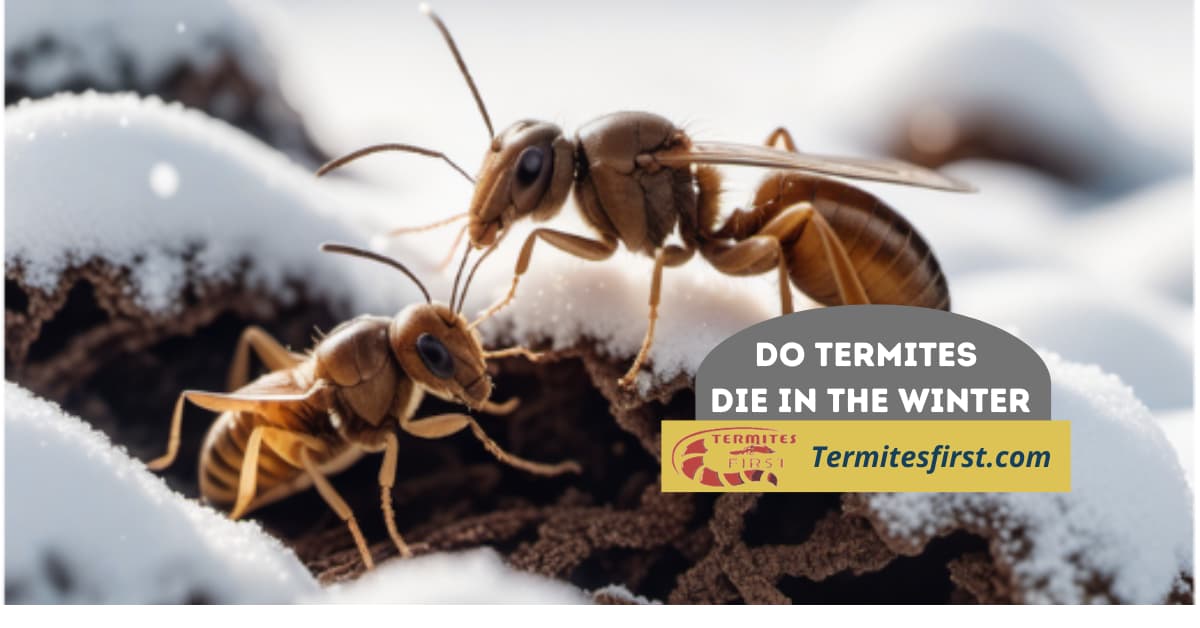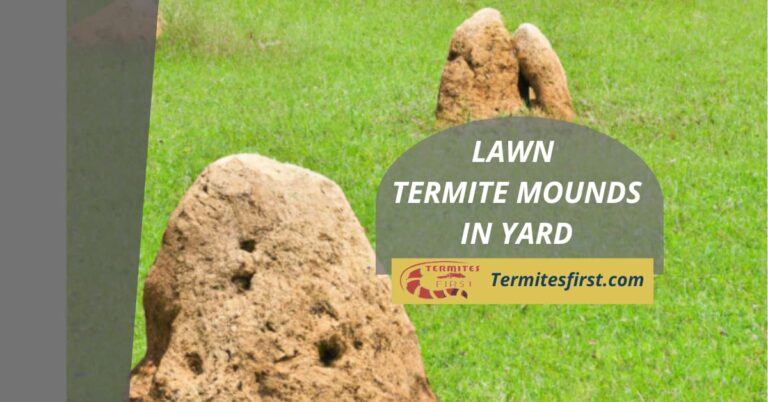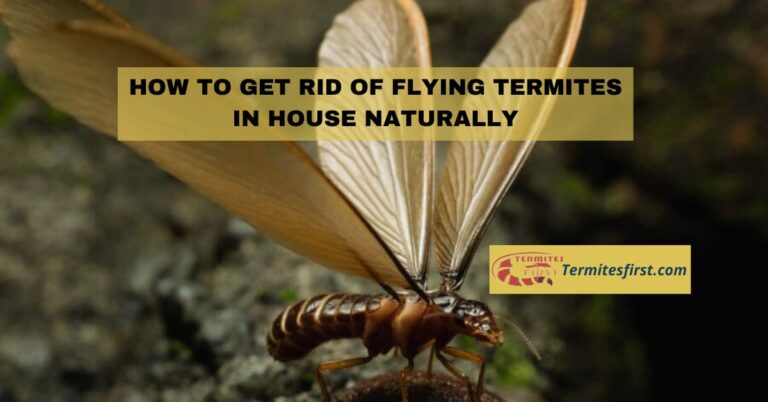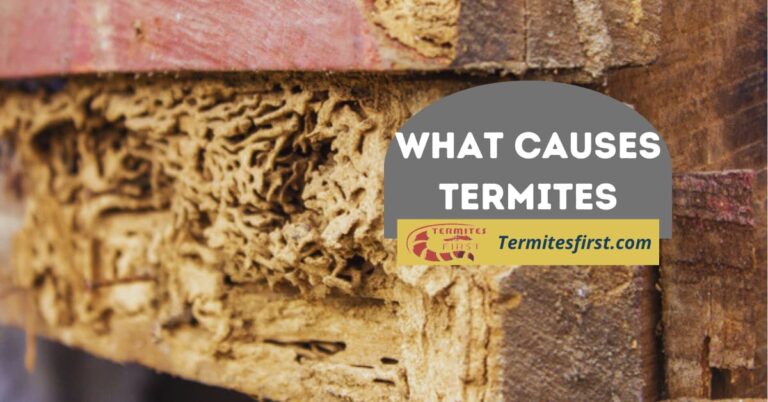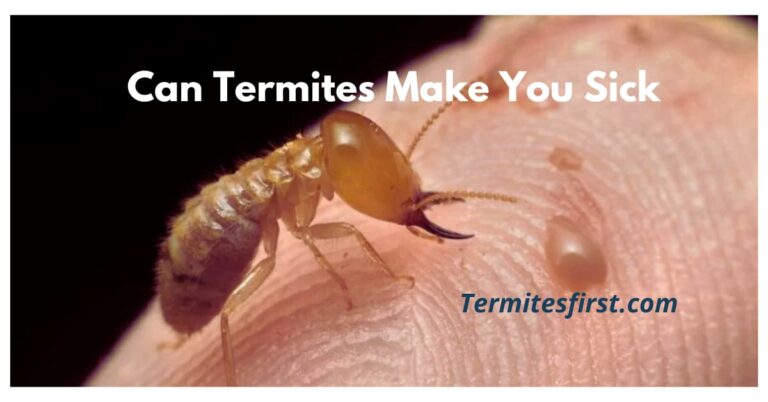Do Termites Die in the Winter? Signs of Winter Activity
I often wonder about the survival of termites in harsh winter conditions by the bay. Many people believe these pests, such as termite swarmers, simply vanish when the weather turns cold, but termite infestation can still occur as termite workers remain active. However, termites have fascinating ways to endure. They seek warmth in the ground or within wooden structures, often leading to termite woes from subterranean termite colonies and a potential termite infestation caused by subterranean termites. This behavior helps them avoid freezing temperatures.
Historically, termites have adapted to various climates for millions of years. Their ability to survive winter is crucial for their colonies amid termite infestation. Understanding whether termites die in the winter can help homeowners protect their properties effectively. I’ll explore this topic further and reveal what really happens to these resilient insects, including termite infestation, during the colder months.
Key Takeaways
- Termites do not die in winter; they have survival strategies that allow them to endure cold temperatures.
- Understanding how termites manage cold can help homeowners recognize potential infestations during winter months.
- Look for signs of winter termite activity, such as mud tubes and droppings, to identify infestations early.
- Protect your home by sealing entry points and reducing moisture, which can deter termites from nesting.
- Stay vigilant throughout the winter; regular inspections can prevent severe damage from hidden termite activity.
- Consider professional pest control solutions if you suspect an infestation, as experts can provide effective treatments and prevention strategies.
Do Termites Die in Winter
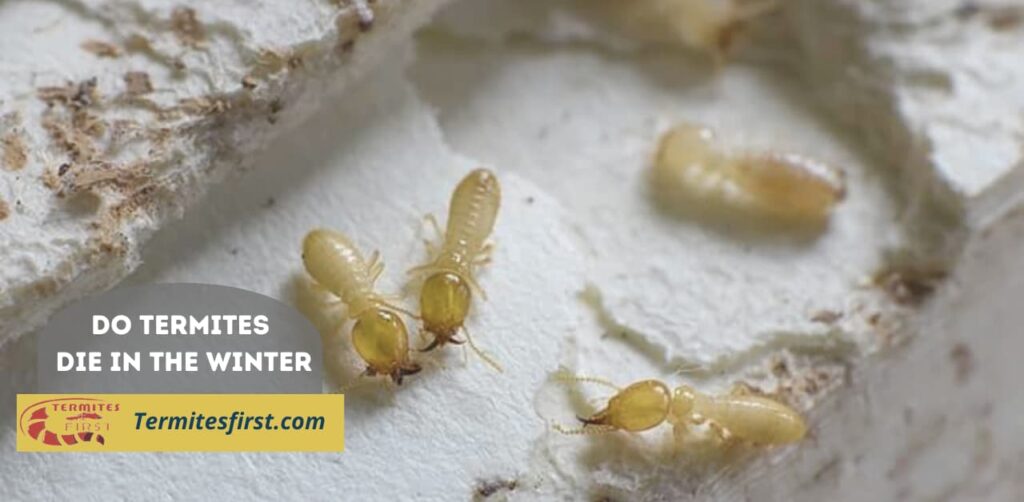
Activity Levels
Termites remain active during winter. They do not die off when temperatures drop. Instead, they seek warmth and shelter in the ground or within wooden structures, avoiding areas of termite infestation. I often find it surprising how many people think termites go dormant in colder weather.
This belief about termite infestation can lead to a false sense of security. Termites can survive freezing temperatures by burrowing deep into the soil. The ground insulates them from extreme cold. In fact, they can continue feeding on wood and other materials throughout winter. Homeowners should not underestimate their resilience.
Misconceptions
Many people believe that colder weather eliminates termite threats. This misconception can cause significant issues for homeowners. I have seen firsthand how this misunderstanding leads to unexpected damage in homes.
These steps can help minimize the risk of attracting termites. It’s important to remember that even during winter months, these pests may still pose a threat.
While some pests do become inactive in winter, termites are not among them. They adapt to their environment, finding ways to survive harsh conditions. Ignoring the possibility of termite activity during winter can result in costly repairs later on.
Year-Round Damage
Recognizing that termite damage can occur year-round is crucial. Termites do not take breaks; they work continuously to consume wood and other cellulose-based materials. I learned this lesson after discovering hidden damage in my home during an inspection.
Homeowners must remain vigilant about signs of infestation at any time of year. Some common signs include mud tubes, discarded wings, and hollow-sounding wood. Regular inspections by pest control professionals can help identify problems early.
Prevention Strategies
To prevent termite infestations, consider these strategies:
- Seal cracks in foundations and walls.
- Reduce moisture around the home.
- Store firewood away from the house.
- Maintain gutters to divert water away from the foundation.
Termite Survival Strategies
Adaptation Techniques
Termites have unique adaptation techniques to survive cold weather. They can sense temperature changes and respond accordingly. During winter, they slow down their activity. This helps conserve energy and resources. I find it fascinating how these tiny creatures can adjust to their environment.
These insects often cluster together in their colonies for warmth. This behavior creates a microclimate that protects them from cold temperatures. By staying close, they share body heat, which helps maintain the colony’s overall temperature.
Deeper Tunneling
Deeper tunneling plays a crucial role in termite survival. As temperatures drop, termites dig deeper into the ground. The soil below the frost line remains warmer than the surface. This allows them to escape freezing conditions.
The tunnels also provide protection from predators and harsh weather. I’ve read about how some species can tunnel as deep as 20 feet underground. This depth ensures that they stay safe and warm during winter months.
Continuous Feeding
Termites are known for their continuous feeding habits, even in winter. They do not hibernate like some other insects. Instead, they remain active at lower levels of activity. Their diet primarily consists of wood and plant material.
Feeding allows termites to maintain their energy levels during colder months. They consume cellulose found in wood, which is abundant in many environments. I once learned that this constant feeding is vital for the health of the colony.
Even when it’s cold outside, termites continue to digest food slowly. This process keeps them nourished and ready for spring when temperatures rise again.
How Termites Manage Cold
Winter Conditions
Termites prefer warm and moist environments. During winter, they seek shelter from cold temperatures. They often find this shelter underground or within the wood of structures. The temperature must remain above freezing for them to survive. I have noticed that even in colder climates, termites can still be active if conditions are right.
Utilizing Homes
Termites often invade homes during winter months. They look for warmth and moisture inside buildings. This makes basements and crawl spaces attractive to them. These areas tend to retain heat better than outside. As a result, termites can thrive in these hidden spots. Homeowners may not realize their homes provide perfect conditions for termite activity.
Insulation’s Role
Insulation plays a significant role in attracting termites. Proper insulation helps maintain warmth inside a house. This warmth creates an ideal environment for termites during winter. They can easily access wood materials in walls and floors. Structural features like cracks and gaps also allow entry points for termites. I’ve seen how even small openings can lead to big infestations if not addressed.
Signs of Winter Termite Activity
Mud Tubes
Mud tubes are a clear sign of termite activity. These tubes provide shelter for termites as they travel between their nest and food sources. They look like small, pencil-sized tunnels made from soil and wood particles.
I once found mud tubes in my basement. It was alarming to see how quickly they can build these structures. Identifying them early can help prevent major damage.
Wood Damage
Wood damage is another important sign of termite presence. Termites eat wood from the inside out, leaving behind hollowed-out sections. You might notice soft or crumbling wood around your home.
Regular checks on wooden structures can reveal this damage. I often tap on wooden beams to listen for hollow sounds. This simple method can indicate if termites are at work.
Discarded Wings
Discarded wings are a strong indicator of drywood termite activity. Swarmers lose their wings after mating, leaving them behind. Finding these wings near windows or doors means you may have an infestation.
I remember cleaning up my attic when I discovered some wings. It prompted me to investigate further, leading me to find more signs of termites nearby.
Regular Inspections
Regular inspections are crucial during winter months. Even though termite activity slows down, it doesn’t stop completely. Checking for signs like mud tubes, wood damage, and discarded wings helps catch any problems early.
I make it a habit to inspect my home every few months. This practice gives me peace of mind knowing that I am proactive against termite infestations.
Vigilance is Key
Vigilance remains essential despite reduced visible activity in winter. Termites can still be present and cause damage without obvious signs. Homeowners should stay alert and monitor their property regularly.
I learned that even in colder months, termites can be sneaky. Staying aware of the signs ensures I don’t miss any potential issues.
Professional Help
Consider seeking professional help if you suspect termite activity. Experts can identify signs that homeowners might overlook. They can also recommend treatment options tailored to your specific situation.
I consulted with a pest control expert last winter. Their advice helped me understand how to protect my home better.
Identifying Termite Infestations
Early Signs
Spotting early signs of a termite infestation can prevent extensive damage. Look for mud tubes on walls or surfaces. These tubes are about the size of a pencil and provide shelter for termites as they travel.
I remember finding mud tubes in my basement once. It was alarming to see how quickly they can create these structures. I learned that early detection is key to managing termite problems.
Inspecting Areas
Inspecting specific areas in your home is crucial. Basements and crawl spaces often hide termite nests. Check for any signs of termite activity in these places.
Use a flashlight to look into dark corners where termites may hide. This simple tool can reveal termite holes and other signs of infestation. If you notice wood that sounds hollow when tapped, this could indicate a termite problem.
Professional Help
Consider hiring professional termite inspectors if you suspect an infestation. They use specialized tools to identify termite colonies and assess damage. A typical termite inspection includes checking both the interior and exterior of your home.
Termite inspectors know what to look for, which can save you time and stress. They will also provide recommendations for treatment options if they find evidence of termites.
Termite Damage
Understanding the potential for extensive termite damage is important. Termites can weaken the structure of your home over time. They feed on wood, drywall, and even insulation.
If you discover signs of a termite invasion, act quickly. Delaying action can lead to costly repairs down the line. I’ve seen homes that suffered from severe infestations due to lack of attention.
Common Species
Familiarize yourself with common termite species in your area. Different species may cause varying types of damage. For example, subterranean termites build nests underground while drywood termites live within the wood they consume.
By knowing which species you might encounter, you can better prepare for inspections and treatments.
Treatment Options
There are various termite treatments available today. Chemical barriers can protect your home from future infestations. Bait systems attract termites and eliminate them before they reach your home.
Consulting with professional termite control services can help determine the best approach for your situation.
Protecting Your Home in Winter
Sealing Entry Points
Homeowners should focus on sealing entry points to prevent termite access. Gaps around windows, doors, and foundations can allow pests to enter. I often check these areas in my home during the colder months. Caulking and weather stripping can effectively block these openings.
Termites may not be active in winter, but they can still find ways inside. Sealing cracks and holes is a smart move. It creates a barrier against potential infestations. This simple step can save homeowners from costly repairs later.
Moisture Control
Maintaining proper drainage is crucial for reducing moisture around the home. Termites thrive in damp environments. Homeowners should ensure that gutters are clean and downspouts direct water away from the foundation. I always make it a point to inspect my gutters before winter sets in.
Landscaping also plays a role. Keeping mulch away from the foundation helps minimize moisture buildup. Ensure that soil slopes away from the house. This prevents water pooling near the foundation and discourages termite activity.
Regular Maintenance Checks
Regular maintenance checks help identify potential vulnerabilities in your home. Homeowners should inspect basements, crawl spaces, and attics for signs of moisture or damage. I find that doing this twice a year keeps my home safe from infestations.
Look for wood that feels soft or crumbles easily. These are signs of termite damage. If you notice any issues, address them immediately to avoid further problems. Hiring a pest control professional for an inspection can provide peace of mind.
Importance of Vigilance
Stay Guarded
Termites can be a hidden threat. Even in winter, they remain active beneath the surface. They do not die off with the cold. Instead, they seek warmth and food sources inside homes. I have often wondered how such small creatures can cause so much damage. Homeowners must stay alert to their presence.
Ignoring signs of termite activity can lead to severe consequences. Wood damage may occur slowly, but it is often unnoticed until it’s too late. Regular inspections are crucial. I recommend checking areas like basements, attics, and crawl spaces for any signs of termites.
Be Alert
Signs of termites include mud tubes and hollow-sounding wood. These indicators should not be overlooked. Homeowners need to be proactive in pest control efforts. I’ve seen friends face costly repairs due to termite infestations that went unnoticed. Staying alert can prevent this from happening.
Professional pest control services can help identify potential problems. They can offer treatments that protect against termites year-round. If you notice any unusual sounds or see droppings, call an expert immediately. Quick action is essential in managing termite threats.
Risks of Ignoring Signs
The risks of ignoring termite signs are significant. Termites can weaken structures over time, leading to safety hazards. Repairing damaged wood can cost thousands of dollars. Many homeowners underestimate the damage until it becomes visible.
In my experience, early detection saves money and stress. A small investment in regular inspections can pay off significantly later on. Homeowners should take this seriously to avoid future headaches.
Proactive Measures
Taking proactive measures is vital for home protection. Here are some steps to consider:
- Schedule regular inspections with a pest control expert.
- Seal cracks and openings around your home.
- Maintain proper drainage to reduce moisture buildup.
- Keep firewood and mulch away from foundations.
These actions create barriers against termite invasions. I’ve found that maintaining a clean yard also helps deter pests from entering my home.
Homeowners should not let their guard down during winter months. Just because termites are less visible does not mean they are gone. Remaining vigilant is crucial for protecting your property from these destructive pests.
Winter Prevention Tips
Keep Firewood Away
Firewood can attract termites. Keeping it at least 20 feet away from your home helps reduce this risk. I always store my firewood in a shed or elevated rack. This minimizes contact with the ground and keeps it dry.
Termites thrive in moist environments. If firewood sits too close to your house, it creates a perfect spot for them. The wood retains moisture, attracting these pests during the cold season.
Regular Inspections
Regular inspections are crucial during winter months. Homeowners should check for signs of termite activity. Look for mud tubes or damaged wood around the foundation. I recommend scheduling inspections at least twice a year.
Professional pest control services can help identify any hidden infestations. They have tools and expertise to detect termites that might go unnoticed. Early detection can save homeowners from costly repairs.
Seal Entry Points
Sealing entry points is another effective strategy. Cracks and gaps around windows and doors allow termites easy access. Use caulk to fill these openings. This simple step can make a big difference in keeping termites out.
Inspect your roof and eaves as well. Gaps here can also let pests enter your home. I often find that small repairs can prevent larger issues down the line.
Manage Moisture Levels
Moisture control is vital in preventing termite infestations. Check for leaks in pipes and faucets, especially during colder months. Fixing these leaks reduces water accumulation, which attracts termites.
Proper drainage around your home is also essential. Ensure gutters are clean and direct water away from the foundation. I’ve noticed that maintaining good drainage helps keep my home safe from pests.
Consider Treatments
Consider using preventive treatments as part of your winter preparation. Termiticide barriers can deter termites from entering your home. Consult with a pest control expert about the best options for your situation.
Treatments can offer long-lasting protection, ensuring your home remains safe during the winter months. Consistent reapplications are essential to safeguard against any potential termite invasions.
Stay Informed
Staying informed about termite behavior is key. Understanding their seasonal behaviors helps homeowners prepare better. Termites remain active even in cold temperatures, seeking warmth and moisture indoors.
I often read articles and attend local workshops on pest prevention strategies. Knowledge equips me to take proactive measures against termite threats.
Professional Help and Solutions
Expert Assistance
Termite problems can escalate quickly. Seeking professional pest control services is vital for effective management. Experts know how to identify signs of termite activity. They understand the specific conditions that lead to infestations.
I remember when I first encountered termites in my home. I underestimated their potential damage. A professional helped me realize the extent of the problem. Their expertise saved my property from significant harm.
Regular Inspections
Regular inspections by pest control experts are essential. These professionals can spot early signs of infestation before they become severe. They provide a thorough assessment of your home.
In my experience, routine checks help prevent new colonies from forming. I learned that termites can remain hidden for long periods. Without inspections, homeowners may miss critical indicators of activity.
Tailored Treatment Plans
Tailored treatment plans play a crucial role in termite prevention. Each home has unique needs based on its structure and environment. Professionals create customized solutions targeting specific issues.
For instance, some homes may require bait systems, while others benefit from liquid treatments. A one-size-fits-all approach often fails to address the problem effectively. I found that working with an expert led to better outcomes.
Importance of Timeliness
Timing is everything when dealing with termites. The earlier you act, the better your chances of controlling an infestation. It’s important to schedule inspections during warmer months when termites are most active.
In winter, many people think termites die off. However, they often stay dormant but alive in wood or soil. This behavior means they can re-emerge when temperatures rise again. If left unchecked, these pests can cause serious damage to your home over time.
Understanding the Problem
Understanding why termites invade homes can help in prevention efforts. They search for moisture and food sources, like wood and cellulose materials. Homeowners should reduce moisture levels around their property to deter these pests.
Taking proactive measures is critical. I always check for leaks and maintain gutters to keep my home dry. This simple action can significantly lower the risk of attracting termites.
Conclusion:
Termites don’t simply die off in winter. They adapt and survive, which means I need to stay alert. Understanding their survival strategies is crucial for protecting my home. Identifying signs of activity and taking preventive measures can save me a lot of trouble down the line.
I recommend keeping an eye out for any warning signs and being proactive. If I suspect an infestation, seeking professional help is a smart move. It’s better to tackle the problem early than face costly repairs later. Remember, vigilance pays off. Let’s work together to keep our homes safe from these pests this winter!
FAQ’s:
No, termites do not die in winter. They enter a state of dormancy but can survive cold temperatures by retreating deeper into the ground or structures where it’s warmer.
Termites survive cold weather by burrowing deep underground. This protects them from freezing temperatures and allows them to maintain a stable environment.
Signs of termite activity in winter include mud tubes, discarded wings, and hollow-sounding wood. Homeowners should inspect these areas regularly for any signs of infestation.
Yes, termites can cause damage during winter. They remain active in their nests and can continue to feed on wood, leading to structural damage over time.
To protect your home from termites in winter, ensure proper drainage, seal cracks, and eliminate moisture sources. Regular inspections can help catch infestations early.
Call a professional if you notice signs of termite activity or have concerns about potential infestations. Early intervention can prevent extensive damage and costly repairs.
Effective winter prevention tips include sealing entry points, reducing wood-to-soil contact, and maintaining a dry environment. Regular inspections are crucial for long-term protection against termites.

